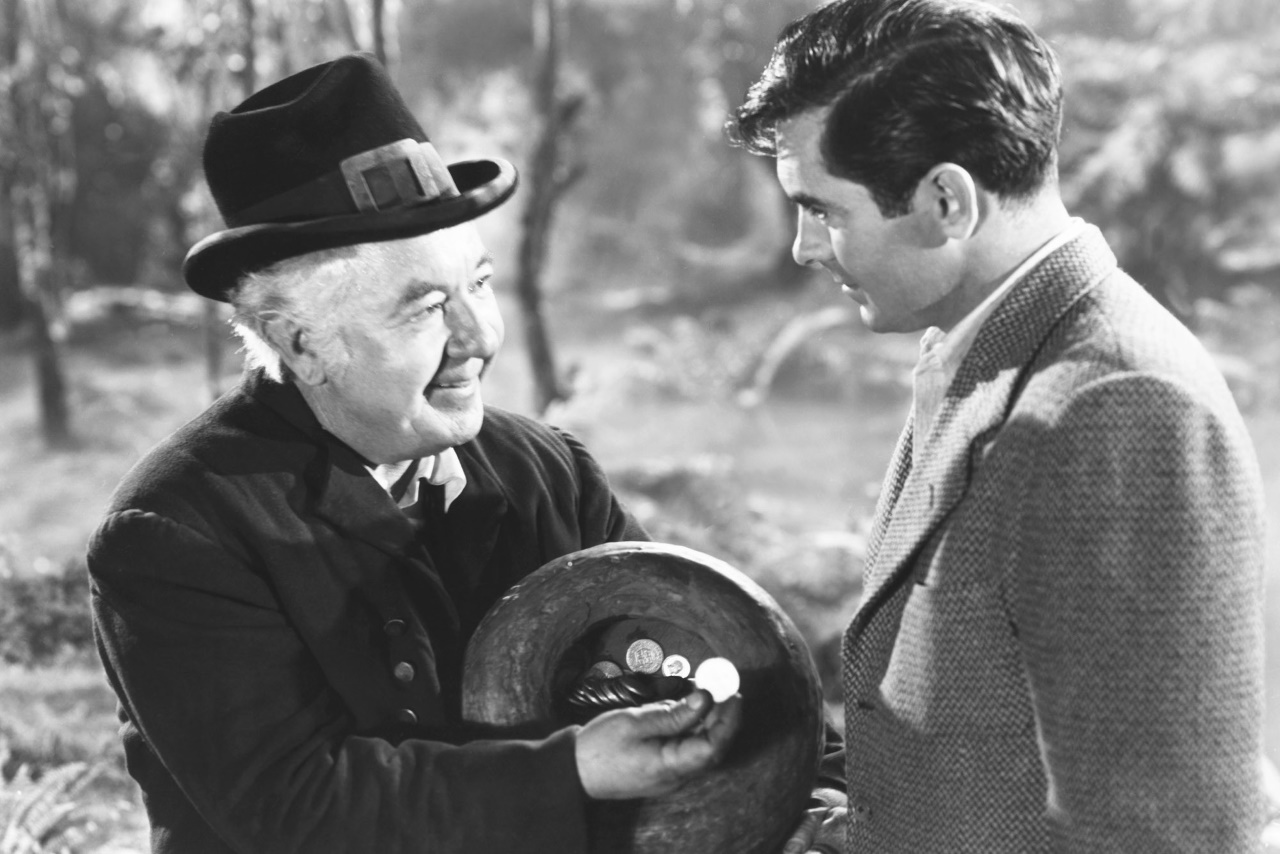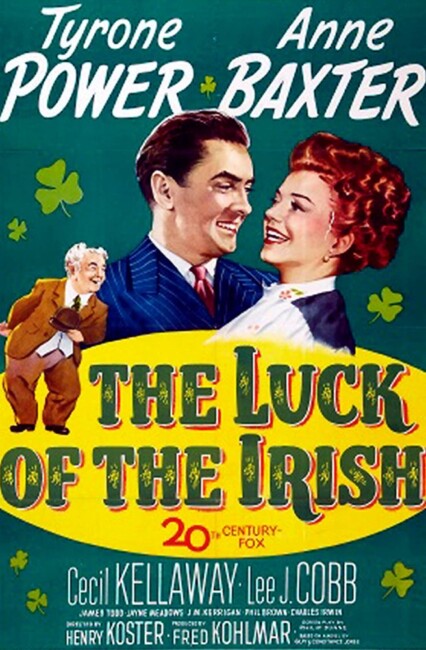USA. 1948.
Crew
Director – Henry Koster, Screenplay – Philip Dunne, Based on the Novel by Constance & Guy Jones, Producer – Fred Kohlmar, Photography (b&w) – Joseph LaShalle, Music – Cyril Mockridge, Music Director – Lionel Newman, Photographic Effects – Fred Sersen, Art Direction – J. Russell Spencer & Lyle Wheeler. Production Company – 20th Century Fox.
Cast
Tyrone Power (Stephen Fitzgerald), Cecil Kellaway (Horace), Anne Baxter (Nora), Lee J. Cobb (D.C. Augur), Jayne Meadows (Frances Augur), James Todd (Bill Clark), J.M. Kerrigan (Tatie)
Plot
Journalist Stephen Fitzgerald and a friend are travelling through rural Ireland when a bridge collapses under their car. Fitzgerald meets a peculiar man near a waterfall in the nearby woods, although at the inn locals insist that that there is no waterfall in the woods and that the man is a leprechaun. When Fitzgerald next sees the man, he grabs him and demands his pot of gold, not believing that the myth will work. When the man gives him the pot, Fitzgerald cannot accept it. Back in New York, Fitzgerald signs on as campaign manager for politically ambitious newspaper editor D.C. Augur, whom he had previously criticised, in return for Augur offering him a good deal of money. The manservant that Augur provides for him proves to be an eccentric Irishman Horace who has strange abilities. When Nora, the girl that Fitzgerald met in Ireland, turns up, Fitzgerald begins to wonder if he made the right decision in selling out to Augur.
The Luck of the Irish was the first Hollywood film to deal with Leprechauns such as Darby O’Gill and the Little People (1959), Finian’s Rainbow (1968), Leapin’ Leprechauns! (1995), The Magical Land of the Leprechauns (1999) and, God forbid, the Leprechaun series that began with Leprechaun (1993).
That said, The Luck of the Irish is very different to later treatments of the leprechaun theme. There is a pot of gold but if one comes to this after having seen later Hollywood efforts , there is a disappointing lack of green-skinned creatures and wishes. The leprechaun himself is a rolypoly, normal-sized Cecil Kellaway, not a little person. In fact, there is not even much in the way of magic.
The early scenes set in Ireland soon give way to the greater body of the story set around Tyrone Power’s choices between integrity or wealth, success or sell-out. Like the classic Harvey (1950), The Luck of the Irish is a film not so much about the existence of magical companions as it is about championing a preference for whimsy and nonsense over society and responsibility. The end has the hero abandoning his high-flying job as PR man to a senatorial candidate and going off to live the untroubled life in rural Ireland.

That said, the film is delightfully told. Director Henry Koster has a wonderfully droll touch. Cecil Kellaway’s bumblings, making drinks and burning toast are absolutely charming. There is some sly humour that managed to get past the censors of the time: “It’s the oldest profession,” “You mean politics?” “You’ve got to admit there are certain similarities.”
There are a number of different films that all bear the title The Luck of the Irish – The Luck of the Irish (1920), The Luck of the Irish (1936) and The Luck of the Irish (2001) – but these are not connected in any way. The only one of these that is fantasy is the latter, a Disney Channel tv movie where a kid discovers that he is part leprechaun.
Director Henry Koster (1905-88) was German born and fled to Hollywood from the Nazis. There Koster made a number of romances and dramas, including The Robe (1953), The Virgin Queen (1955) and The Power and the Prize 91956), among others. He made two other ventures into fantasy material with The Bishop’s Wife (1947) and Harvey (1950).
Trailer here


